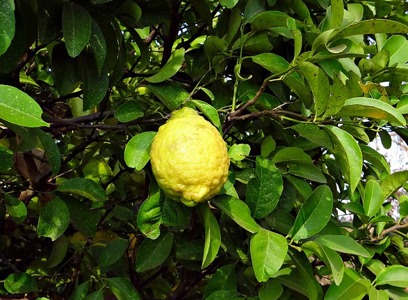The arba minim through the lens of the land-dependent mitzvot: what to look out for when selecting your arba minim

Planning on buying a set of arba minim? Rabbi Ehud Achituv of Torah VeHa'aretz Institute sets things straight: what to look for when selecting your lulav, etrog, hadasim, and aravot.
Etrog
Ma'aserot: A kosher etrog needs to be tithed. For this reason, it is important to make sure to purchase your etrog from a dealer who definitely took terumot and ma'aserot (using other etrogim). If the etrog was grown in someone's yard, terumot and ma'aserot are to be taken before yom tov, since an untithed etrog is tevel, and it is forbidden to make a blessing on it throughout Sukkot.
Netina: Giving the gifts. Ensure that after taking the terumot and ma'aserot from the etrog, the gifts were actually given to their proper destinations. Ma'aser rishon needs to be given to a Levi, while for etrogim that began growing during the ma'aser ani year, ma'aser ani is given to a poor person after the ma'aserot are set aside. This is because the etrog is kosher only when it belongs to us, as the verse states (Vayikra 23:40) "On the first day you shall take for yourselves the fruit of a majestic tree, the branches of date palms, twigs of a plaited tree, and brook willows …."; Chazal understand "for yourselves" as "belonging to you" (Sukkah 27b). If the ma'aserot were not given to the intended recipients, this means that part of the etrog belongs to a Levi and a poor person. Moreover, this is also a form of theft, which invalidates the etrog for the entire duration of Sukkot.
An orlah etrog is invalid (Sukkah 35b). Various rationales are stated by the poskim why an orlah etrog is invalid—and according to some, for the entire duration of the holiday. In light of this, we do not make a blessing on an orlah etrog throughout Sukkot.
A grafted etrog, even if grafted with another citrus tree, is invalid. For this reason, etrog trees grafted onto lemon or other trees are invalid, even if they are beautiful and yellow.
An etrog that grew on a tree without a "pedigree":
The poskim are divided regarding an etrog that grew on a tree that was certainly not grafted, but it is possible that it came from an etrog shoot cut from a grafted etrog tree, which was planted and produced etrogim. The question is: what is the status of the etrogim that grew from this shoot?
Some (including the Chazon Ish) maintain that the etrogim are invalid, since they originate from a grafted tree. They hold that an etrog must be taken from a tree whose forefathers were all ungrafted trees—with yichus (pedigree), as commonly termed.
However, Rabbi A.Y.H. Kook held that if a shoot is taken from a grafted tree and planted alone in the soil, the fruit the resulting tree produces is a genuine etrog, and can be used for making a blessing. This is why etrogim that grew on trees that are known to not have been grafted can be used for the arba minim. One need not check the pedigree of the tree and that of its ancestors. It is sufficient that the tree itself is not grafted. This is view of the majority of the mainstream poskim.
Hadas
Three-leaved, moist hadasim
In previous generations, since hadasim did not necessarily grow in close proximity to many Jewish communities, lenient opinions were relied on for the kashrut of hadasim. In extenuating circumstances, even dry hadasim or those that were not three-leaved were permitted for use.
Now that we have returned to our homeland, there is no reason to be lenient. Today anyone can easily access green, moist hadasim that are three-leaved from tip to tip.
Arava
The kosher species
Lechatchila, we are supposed to take aravot from the type that is commonly found on river banks, as is the accepted tradition over the generations that this was the Torah's intent. They even have various marks that attest to their kashrut: a reddish stem, elongated leaves, and the edge of the leave is smooth (not serrated).
Lulav
Identifying the species of kapot temarim: the kashrut of Canary Palm lulavim
According to some of the poskim, only a palm tree that bears edible fruit is considered kosher for use as a lulav. The common male palm tree does not produce fruit, but the female palm does. Nevertheless, lulavim from the male palm can still be used, since they are included in the same species that does bear fruit. According to this reasoning, the canary palm, whose fruit from the female palm is not edible (and their beracha is shehakol), its lulavim are not kosher for the arba minim. However, others maintain that lulavim may be used from all types of palm trees for the beracha, even those that do not produce edible fruit. This is because the verse states "date palms". This indicates the species as a whole, but does not define a condition for the kashrut of the lulav (that is, it is not necessary that the lulav grow on the specific cultivar of palm trees that produce edible dates). Nevertheless, while there are lenient opinions, one should certainly make the effort to take a lulav from the common palm, which is clearly kosher according to all opinions..
